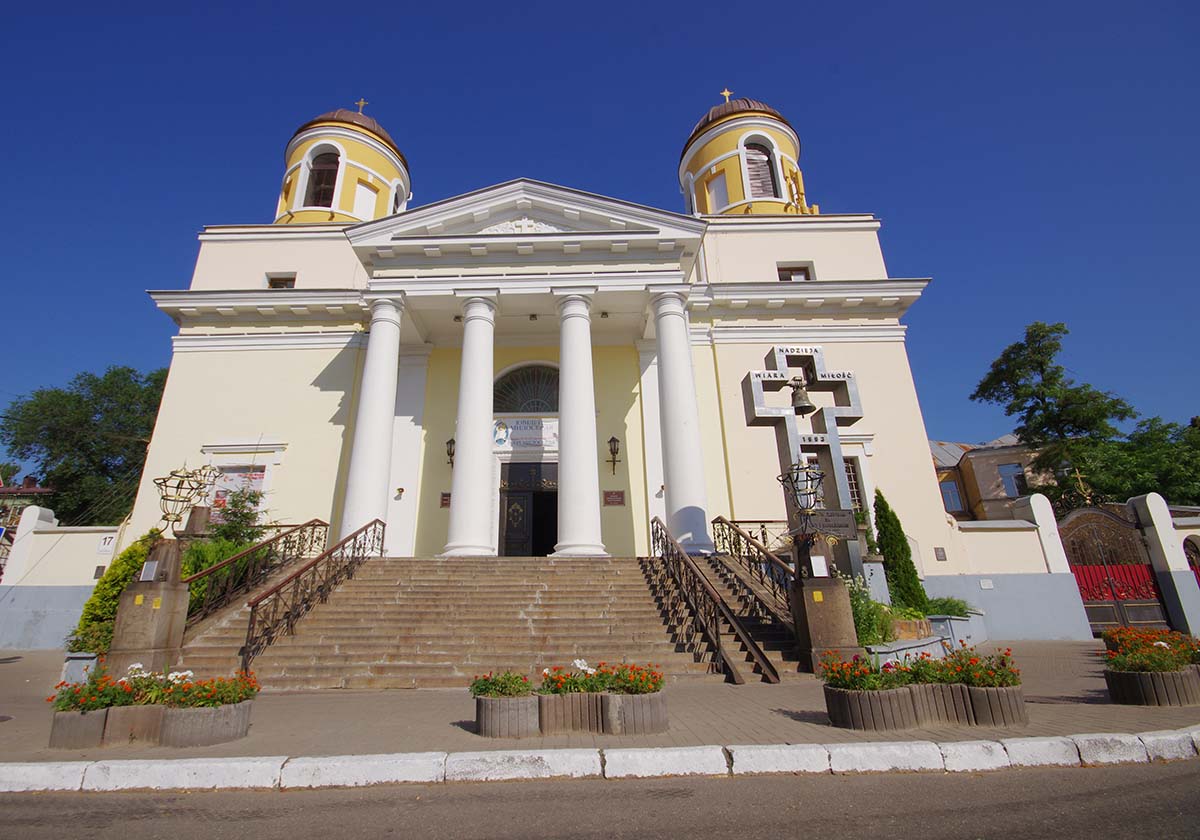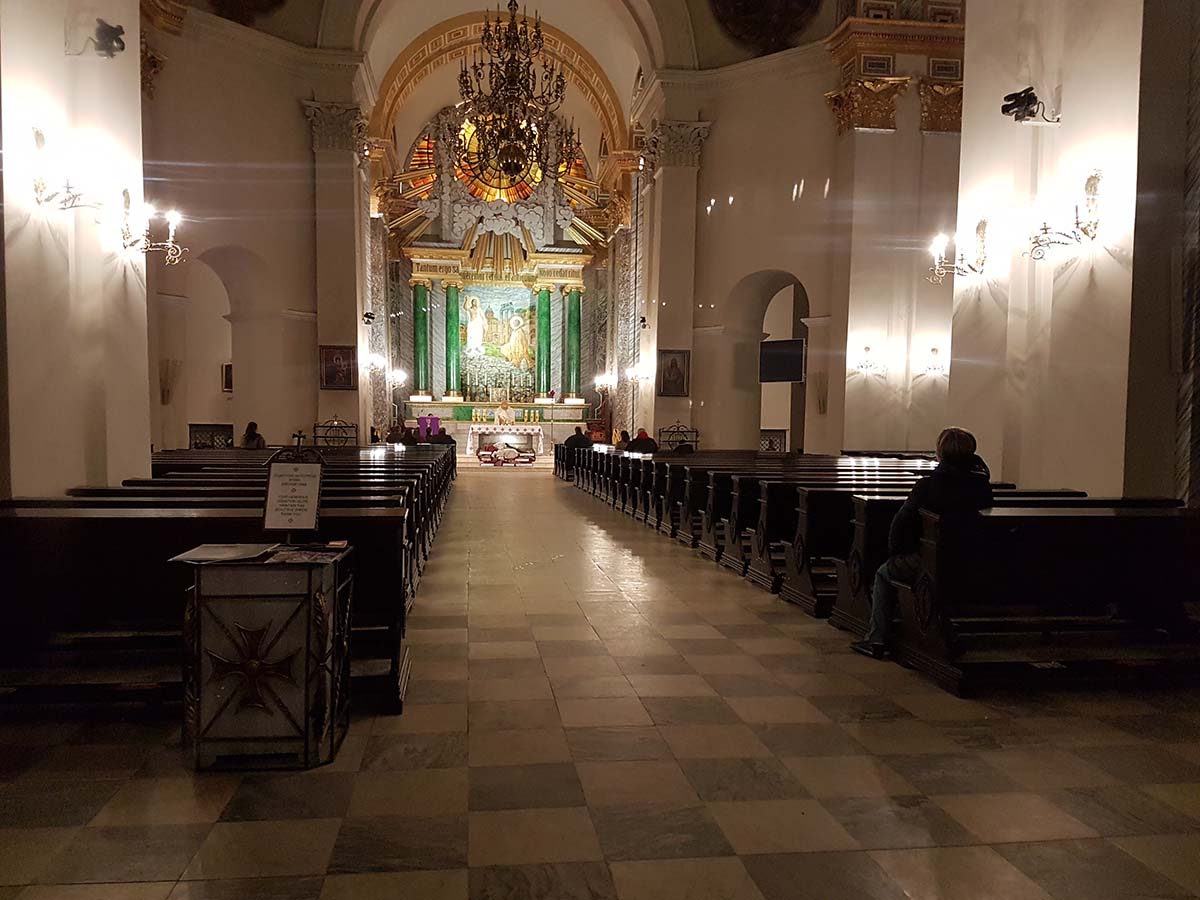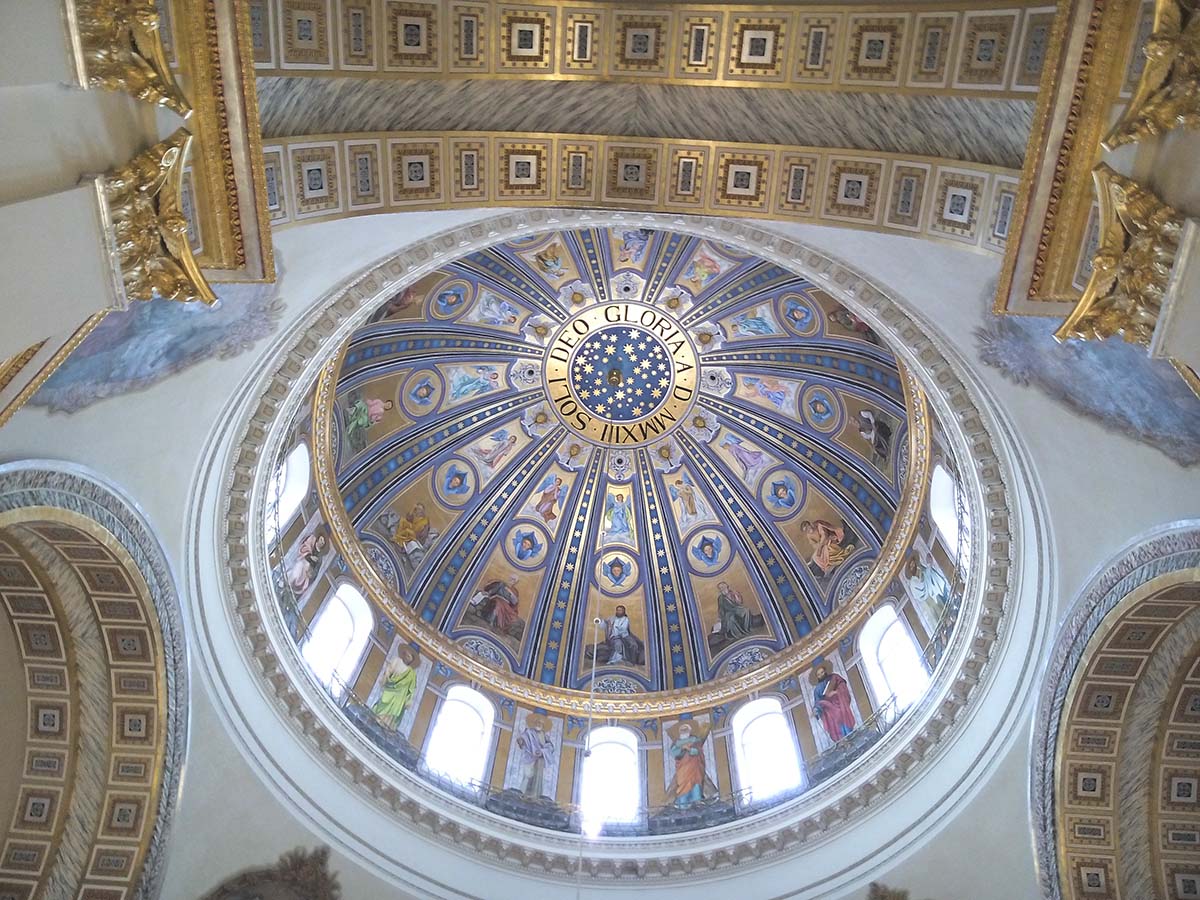At the beginning of the 19th century, there was only one Roman Catholic church in Kyiv – a wooden church, which burned down in 1814 and therefore Kyiv Catholics decided to build a new one. In March of the same year, the chairman of the provincial nobility, Count Pototsky, wrote a letter to Emperor Alexander the First with a request to allow construction. Permission was received only a year later, and a year later the city government allocated land for construction. The laying and consecration of the first stone of the Church of St. Alexander took place in August 1817. The temple was supposed to belong to the Dominican Order. Construction of the temple proceeded very slowly. One of the reasons was the complex location of the land plot – it was located on a steep slope, which constantly had to be strengthened, next to the road. The busy road to Mikhailovsky Monastery caused constant soil shedding from the slope. In addition, there was a constant shortage of funds for construction.
The initial amount collected quickly ran out; wealthy residents of Kyiv did not want to make donations again and construction almost stopped. The situation became even worse after the Polish uprising of 1830-1831, when the Dominicans were forced to leave Kyiv. The unfinished church building began to collapse. However, in 1835 it was saved thanks to the landowner Anthony Savitsky, who promised to allocate the necessary amount for the completion of the temple – about 200,000 rubles. A new project (the author of the old project is unknown) for the Church of St. Alexander was developed by the architect Stanzani, but was slightly changed by Professor Franz Mechowicz, who completed the construction. In accordance with the changed design, the portico of the temple became four-columned instead of six, and small bell towers appeared at the corners of the church. The temple had 6 side altars and a rich interior. Construction lasted a quarter of a century and was completed in 1842.
The Cathedral of St. Alexander owned a plot of land (almost half of modern Kostelnaya Street), which was occupied by a Roman Catholic plebania – residential buildings for the priest and novices. Even at the beginning of the 20th century, the adjacent neighborhoods were home to a compact Polish community. The temple was the center of both spiritual and social life; in particular, solidarity protests of Polish youth took place here during the uprising of 1863-1864. In 1879, the future artist Kazimir Malevich was baptized in the Alexandria Church. Since the main church could not accommodate all the parishioners, the second Kiev Catholic St. Nicholas Church appeared. However, after its construction, the Alexandria Temple lost its dominant role among the Roman Catholics of Kyiv and slowly began to decline.
In the 1920-1930s, the church worked under Soviet anti-religious pressure. The parish priests were subjected to constant persecution – almost all of them were subsequently repressed. The last priest was Sigismund Kwasniewski, who was arrested and executed in 1937. Since then, the Church of St. Alexander has ceased to function as a temple. Its interior has been rebuilt. First, the communist government turned the church into a four-story dormitory for workers of Kievgazstroy and the City Trade Department, and in 1952 into the planetarium of Kyiv University. In 1987, planetarium moved to a new building and the church was abandoned, the building gradually began to collapse. In 1991, it was returned to the Roman Catholic community of Kyiv in disrepair.
During 1990-1994, the Church of St. Alexander was restored. The first services were held right on the stairs and in the portico of the temple, even before it was returned to believers in 1991. On October 7, 1995, the church was consecrated for the second time. It has the status of a pro-cathedral cathedral of the Kiev-Zhitomir diocese of the Roman Catholic Church in Ukraine. On June 25, 2001, Pope John Paul II visited the church during his visit to Kyiv.
Where is St. Alexander’s Cathedral?
Kostelnaya Street, 17
(044) 278-02-43, 279 73 09
divine services: morning 07:30 and 09:00, evening 18:00


